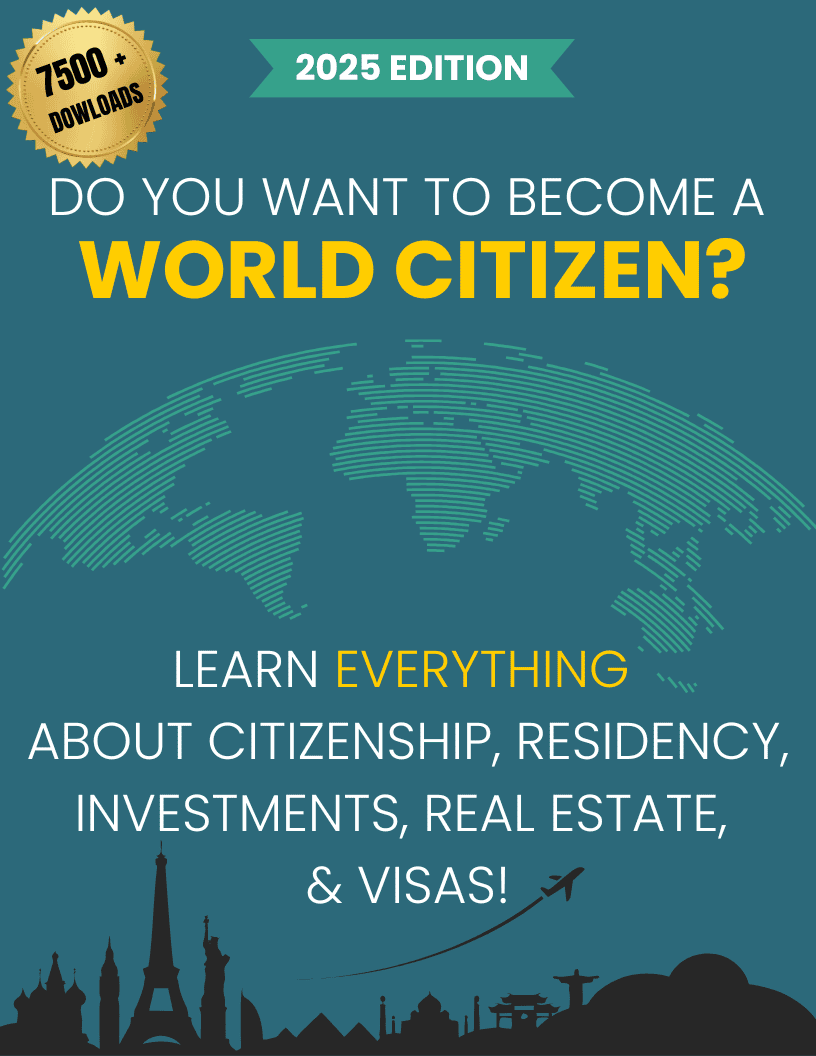E2 Visa vs EB5 Visa
Boost Your Freedom Without Compromise.
- Who offers the CHEAPEST program available.
- Who offers the BEST program available.
- What you need to qualify?

In This Article, You Will Discover:
Comparing E2 and EB5 Visas for Investment in the U.S.
When thinking about moving to the U.S. through investment, two main visa options stand out: the E2 Visa and the EB5 Visa.
Both allow foreign nationals to invest in the U.S. But they have different requirements, benefits, and outcomes.
This article will help you choose the best visa for your immigration and investment goals.
- Who offers the CHEAPEST program available.
- Who offers the BEST program available.
- What you need to qualify?
 Free Consultation
Free Consultation Easy to Use
Easy to Use 100% Safe & Secure
100% Safe & Secure
What Is the E2 Visa?
The E2 Visa is a non-immigrant visa for foreign nationals from countries with a treaty with the U.S. It lets them work in the U.S. based on a substantial investment in a U.S. business. It's known as a treaty investor visa.
Key Features of the E2 Visa:
- Investment Requirements: To get the E2 Visa, the investor must invest a substantial amount in a U.S. business. Investments usually range from $100,000 to $200,000.
- Business Ownership: The investor must own at least 50% of the business or have a controlling interest.
- Temporary Status: The E2 Visa is temporary, with an initial stay of up to two years. It can be extended indefinitely in two-year increments if the business stays operational and profitable.
- Eligibility: The visa is for citizens of countries with a trade treaty with the U.S. Many European, Asian, and Latin American countries qualify.
- Employment: The visa lets the investor manage and work in their U.S.-based business. It also allows certain employees to work for the business.
Advantages of the E2 Visa:
- Faster Processing Time: The E2 Visa has a quicker processing time, often within a few months.
- Renewable: The E2 Visa can be renewed indefinitely if the business is successful, offering a long-term solution.
- Family Eligibility: The E2 Visa allows the investor’s spouse and children under 21 to accompany them. The spouse can also work in the U.S.
- Lower Investment Threshold: The investment amount is generally lower than the EB5 Visa, making it more accessible for smaller businesses.
Disadvantages of the E2 Visa:
- Non-Immigrant Status: The E2 Visa does not lead directly to permanent residency or a Green Card. Investors must renew their visa periodically.
- Country Restrictions: Only citizens of countries with a treaty with the U.S. can apply for this visa, limiting the pool of applicants.
- Limited Business Types: The business must be more than a passive investment (like real estate); it must involve active management or employment of U.S. workers.
What Is the EB5 Visa?
The EB5 Visa is an immigrant visa that grants foreign investors a path to permanent residency (Green Card) in the United States. The EB5 program was created to stimulate the U.S. economy by attracting foreign investment that creates jobs for U.S. citizens and residents. It's a popular visa option for those seeking a direct path to a U.S. Green Card.
Key Features of the EB5 Visa:
- Investment Requirements: The EB5 Visa needs a minimum investment of $1 million in a U.S. business. But, if the investment is in a Targeted Employment Area (TEA), it only needs $500,000.
- Job Creation: The investment must create at least 10 full-time jobs for U.S. workers within two years.
- Permanent Residency: The EB5 Visa leads to permanent residency in the U.S. If the application is successful, the investor and their family can get Green Cards.
- Eligibility: There are no nationality restrictions for the EB5 Visa. The investment must be in a legitimate U.S. business.
- Business Ownership: The EB5 Visa does not require the investor to manage the business daily. As long as the investment meets the criteria, the investor can have a passive role.
Advantages of the EB5 Visa:
- Path to Green Card: The EB5 Visa is an immigrant visa that provides a direct path to U.S. permanent residency (Green Card), and eventually, U.S. citizenship.
- Family Benefits: The EB5 Visa allows the investor’s spouse and unmarried children under 21 to obtain Green Cards as well. This provides a clear route for family reunification.
- No Job Creation Requirement for Smaller Investments: In some cases, the EB5 Visa investor can participate in a Regional Center program. This program pools funds from multiple investors to support large-scale projects. It makes it easier to meet the job creation requirement.
- Flexibility: Investors are not required to manage the day-to-day operations of the business. This provides more flexibility for those who want to invest passively.
Disadvantages of the EB5 Visa:
- High Investment Threshold: The minimum required investment for the EB5 Visa is significantly higher than the E2 Visa. This makes it less accessible for those with limited capital.
- Long Processing Time: The EB5 Visa processing time can take several years. This is due to the high volume of applicants and complex documentation requirements.
- Risk of Investment: While EB5 investments must create jobs, there is still a risk associated with the business's success. If the business fails to meet the job creation requirements, the investor could lose their permanent residency status.
E2 Visa vs EB5 Visa: Key Differences
| Feature | E2 Visa | EB5 Visa |
|---|---|---|
| Investment Amount | Varies, typically $100,000 to $200,000 | $500,000 (TEA) or $1 million (non-TEA) |
| Permanent Residency | No | Yes (Green Card) |
| Job Creation Requirement | No specific requirement | Must create at least 10 jobs |
| Visa Type | Non-immigrant (temporary) | Immigrant (leads to Green Card) |
| Processing Time | Faster (months) | Longer (1–3 years) |
| Family Eligibility | Spouse and children under 21 | Spouse and children under 21 |
| Business Control | Investor must actively manage the business | Passive investment allowed |
Which Visa Is Right for You?
Deciding between the E2 Visa and the EB5 Visa depends on your goals and finances. Consider these factors:
- E2 Visa: Great for those who want to manage a U.S. business and have a lower financial threshold. It's flexible and renewable but doesn't lead to a Green Card. It's only for nationals from treaty countries.
- EB5 Visa: Best for those who can invest more and want a direct path to U.S. permanent residency. It requires a larger investment and job creation. It offers family-based immigration and long-term residency.
Conclusion
Both visas offer unique chances for foreign investors in the U.S. The E2 Visa is easier to get with smaller investments and a desire to run a business. The EB5 Visa is for those willing to invest more and get permanent residency.
By knowing the differences, you can choose the right visa for your investment goals and future in the U.S.
- Who offers the CHEAPEST program available.
- Who offers the BEST program available.
- What you need to qualify?
 Free Consultation
Free Consultation Easy to Use
Easy to Use 100% Safe & Secure
100% Safe & Secure







